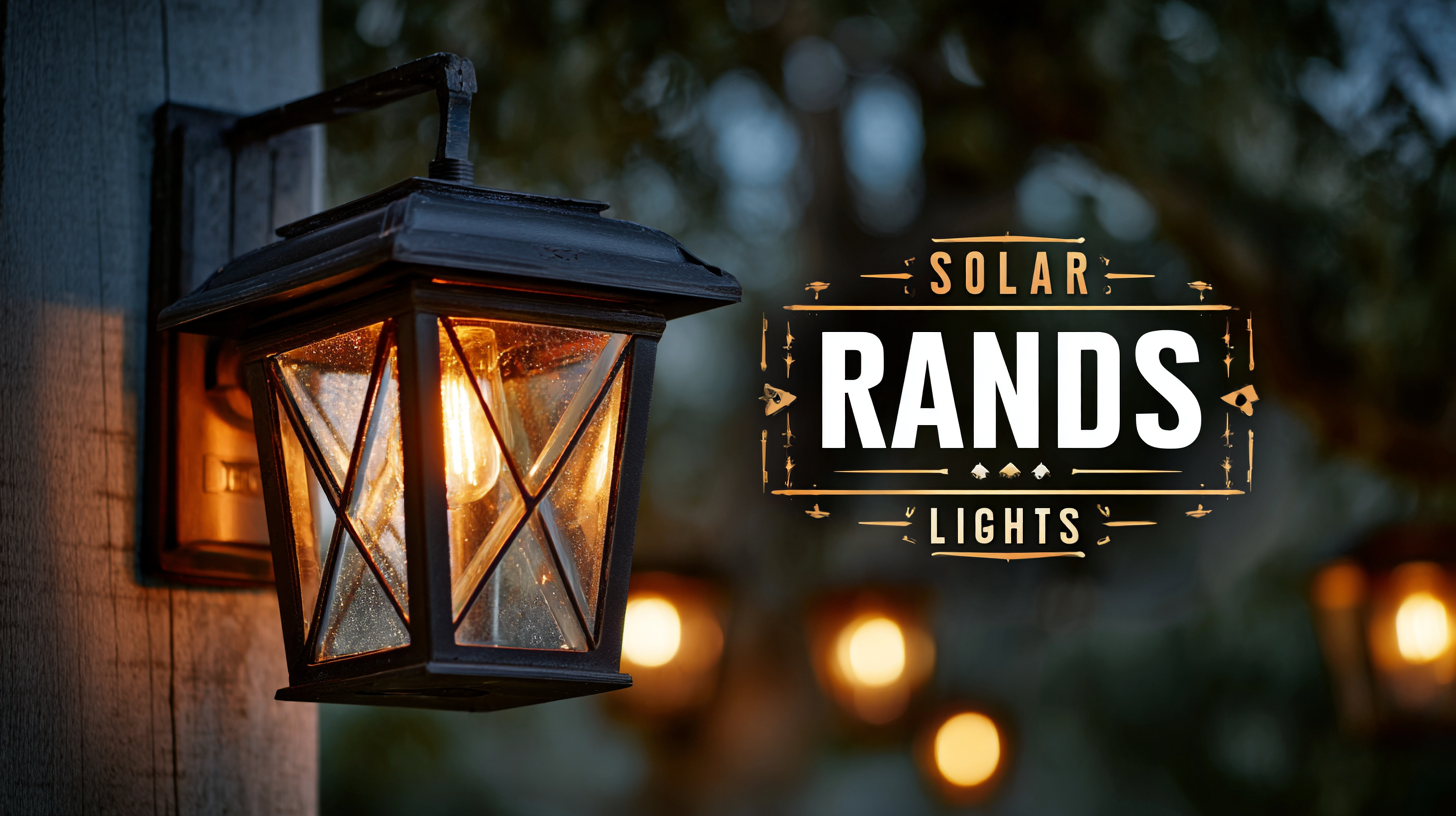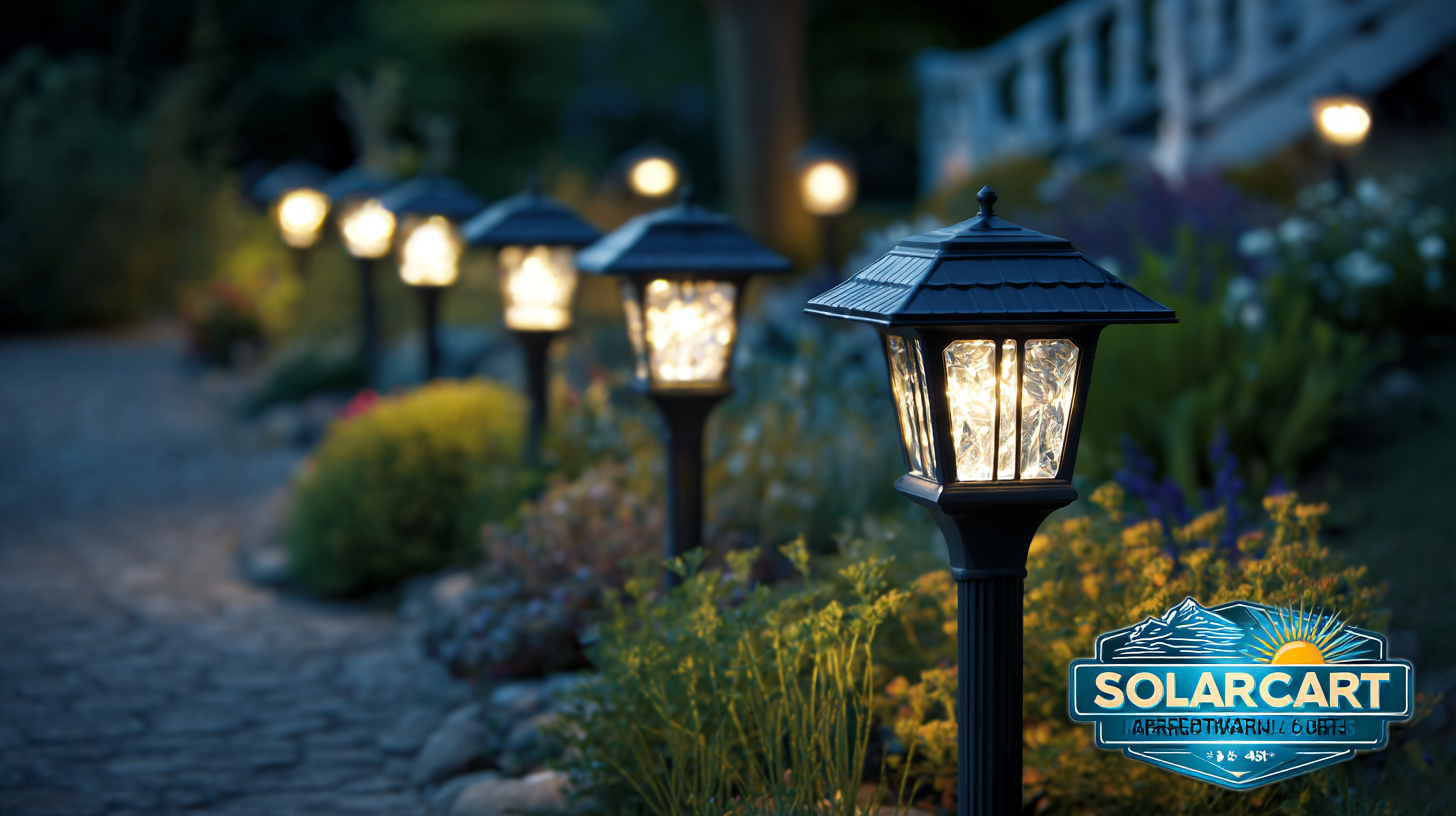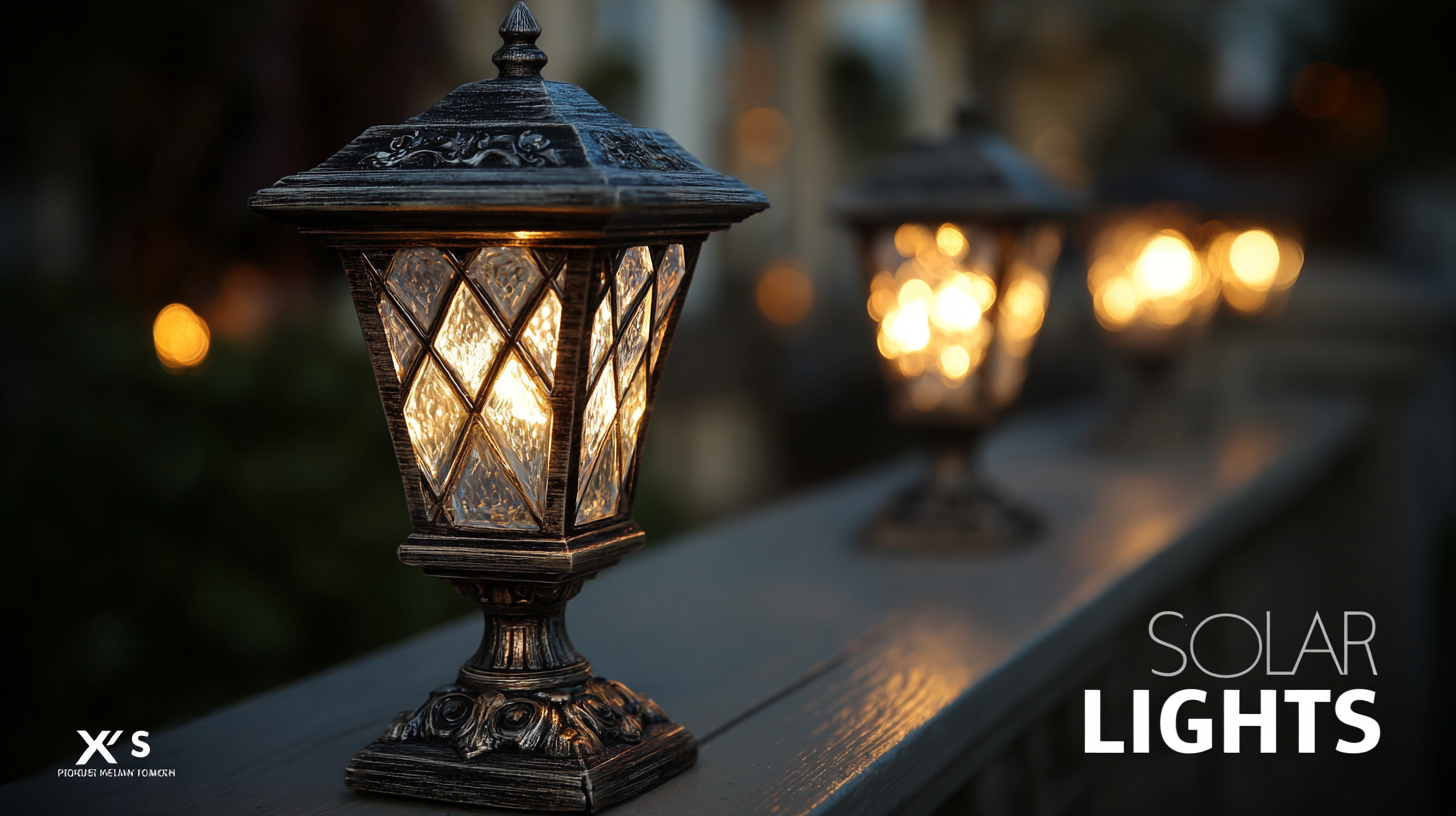Top-Ranked Global Manufacturer Reveals the Best Solar Lights for Outdoor Use: A Comprehensive Review
As global awareness of sustainable energy solutions continues to rise, the demand for eco-friendly outdoor lighting options has surged dramatically. According to a report by the International Energy Agency (IEA), the solar lights market is projected to reach $7 billion by 2024, reflecting an increasing consumer preference for renewable energy products.
 Solar lights for outside not only offer a cost-effective solution to outdoor lighting needs but also significantly reduce carbon footprints. With advancements in technology enhancing the brightness and efficiency of solar lighting systems, selecting the right products can be overwhelming.
This comprehensive review aims to highlight the best solar lights for outside, catering to various needs and preferences, ensuring that homeowners can enjoy well-lit outdoor spaces while making environmentally conscious choices.
Solar lights for outside not only offer a cost-effective solution to outdoor lighting needs but also significantly reduce carbon footprints. With advancements in technology enhancing the brightness and efficiency of solar lighting systems, selecting the right products can be overwhelming.
This comprehensive review aims to highlight the best solar lights for outside, catering to various needs and preferences, ensuring that homeowners can enjoy well-lit outdoor spaces while making environmentally conscious choices.
Top Considerations for Import and Export Certification of Solar Lighting Products
When considering the import and export certification of solar lighting products, it is essential to pay attention to several key factors that can greatly impact market access and compliance. According to a report by MarketsandMarkets, the global solar lighting market is projected to reach USD 4.0 billion by 2025, driven by increasing demand for sustainable lighting solutions. However, with this growth comes the necessity for manufacturers and exporters to navigate complex regulations that can vary significantly by region.
One primary consideration is adherence to international standards such as the IEC (International Electrotechnical Commission) standards, which provide guidelines for the performance and safety of solar lighting products. Compliance with these standards not only guarantees product safety but also enhances marketability across different countries. Furthermore, exporters must be aware of certifications such as CE marking in Europe and UL certification in North America, which are often prerequisites for market entry. A failure to meet these certifications can lead to delays or denials in product approvals, underscoring the importance of understanding the certification landscape in the solar lighting sector.
In addition to technical certifications, documentation related to environmental sustainability plays a crucial role in trade. As consumers and regulatory bodies alike place greater emphasis on eco-friendly products, companies must ensure that their solar lighting products meet not only the functional requirements but also environmental standards such as RoHS (Restriction of Hazardous Substances) and WEEE (Waste Electrical and Electronic Equipment) directives. By prioritizing these considerations in the import and export process, manufacturers can position themselves favorably in an increasingly competitive market.

An In-Depth Analysis of Energy Efficiency Ratings for Solar Lights in Outdoor Settings
When selecting solar lights for outdoor use, energy efficiency ratings play a crucial role in ensuring that you get the most value for your investment. These ratings help consumers identify products that maximize solar energy conversion and provide optimal brightness while minimizing energy waste. In our comprehensive review, we examined several top-rated solar lights, focusing on their specifications and performance in real-world conditions.
In addition to energy ratings, factors such as battery capacity, charging time, and luminosity are essential in evaluating the overall effectiveness of solar lights. Higher efficiency models not only charge faster but also offer longer illumination periods at night, making them ideal for security lighting or creating a warm evening ambiance. Our analysis revealed that premium solar lights provide superior energy management, ensuring consistent performance even in less-than-ideal weather conditions, thus enhancing their practicality for outdoor settings.
The Role of International Standards in Ensuring Quality for Solar Outdoor Lighting
International standards play a crucial role in ensuring the quality and performance of solar outdoor lighting products. By adhering to established benchmarks, manufacturers can guarantee that their solar lights meet specific requirements for durability, efficiency, and safety. This systematic approach not only enhances the reliability of solar lighting solutions but also boosts consumer confidence in their purchases. As consumers become increasingly aware of sustainability, products that comply with international standards are likely to gain more traction in the competitive market.
When selecting solar lights for outdoor use, it's essential to look for certifications that align with global standards. These certifications often indicate rigorous testing in areas such as weather resistance, light output, and battery life. For instance, checking if a product has been rated by organizations like IEC or UL can help ensure you are investing in quality lighting solutions.
Tip: Always review product specifications and look for features such as adjustable brightness and motion sensors that enhance functionality. Additionally, choose lights with high-quality solar panels, as they significantly impact the charging efficiency and overall performance. Investing in well-reviewed solar lighting can lead to long-lasting benefits for your outdoor spaces.
Comparison of Solar Light Performance Metrics
This chart displays the performance metrics of top-ranked solar lights for outdoor use. The metrics include lumens output, battery life, charge time, and durability. These factors are essential for evaluating the effectiveness and quality of solar outdoor lighting solutions.
Key Market Trends: Growth Projections for the Solar Lighting Industry by 2025
The solar lighting industry is poised for significant growth, with projections indicating a notable increase in market size by 2025. Recent insights suggest that the outdoor lighting sector will likely see considerable expansion globally, driven by advancements in technology and growing consumer interest in energy-efficient solutions. The outdoor lighting market is expected to experience substantial growth over the next decade, reflecting a broader trend towards environmentally sustainable products.
Tips for selecting the best solar lights include considering the brightness levels required for your outdoor space and ensuring the solar panels have sufficient exposure to sunlight for optimal performance. Additionally, investing in lights with motion sensors can enhance security while conserving energy when not in use.
Furthermore, the North America outdoor deck lighting market is estimated to grow from USD 944.3 million in 2024 to USD 1,564.9 million by 2033. This growth underscores the increasing preference for solar-powered outdoor lighting as homeowners look to enhance their outdoor environments while minimizing energy consumption.

How to Select the Best Solar Lights: Technical Specifications and User Ratings
When it comes to selecting the best solar lights for outdoor use, understanding the technical specifications and user ratings is crucial for making an informed choice. Start by evaluating the brightness of solar lights, typically measured in lumens. Higher lumens indicate brighter lights, essential for illuminating pathways or garden areas. Look for fixtures with a minimum of 100 lumens for effective outdoor lighting.
Additionally, consider battery capacity and solar efficiency. A well-built solar light should have a large capacity battery that can store energy for extended use, even on cloudy days. Check user ratings to see how well the product performs in real-world conditions, as this can provide insight into the durability and reliability of the solar lights.
Tips: Always ensure that the solar panels are placed in an area that receives direct sunlight for optimal charging. Also, pay attention to the material of the fixtures; durable, weather-resistant materials like stainless steel or high-grade plastic will prolong the lifespan of your solar lights. Lastly, reading reviews from other users can help you avoid common pitfalls and select a product that best fits your outdoor lighting needs.

 Solar lights for outside not only offer a cost-effective solution to outdoor lighting needs but also significantly reduce carbon footprints. With advancements in technology enhancing the brightness and efficiency of solar lighting systems, selecting the right products can be overwhelming.
This comprehensive review aims to highlight the best solar lights for outside, catering to various needs and preferences, ensuring that homeowners can enjoy well-lit outdoor spaces while making environmentally conscious choices.
Solar lights for outside not only offer a cost-effective solution to outdoor lighting needs but also significantly reduce carbon footprints. With advancements in technology enhancing the brightness and efficiency of solar lighting systems, selecting the right products can be overwhelming.
This comprehensive review aims to highlight the best solar lights for outside, catering to various needs and preferences, ensuring that homeowners can enjoy well-lit outdoor spaces while making environmentally conscious choices.

